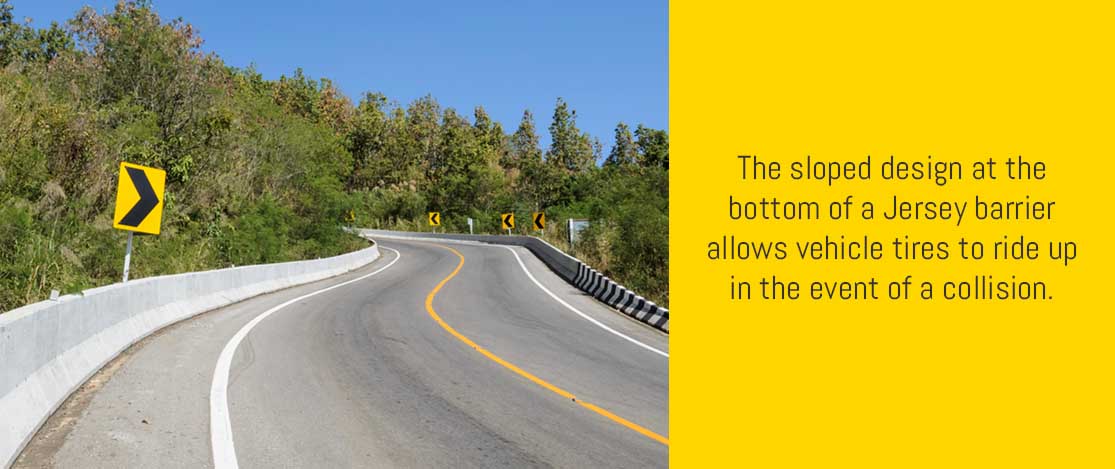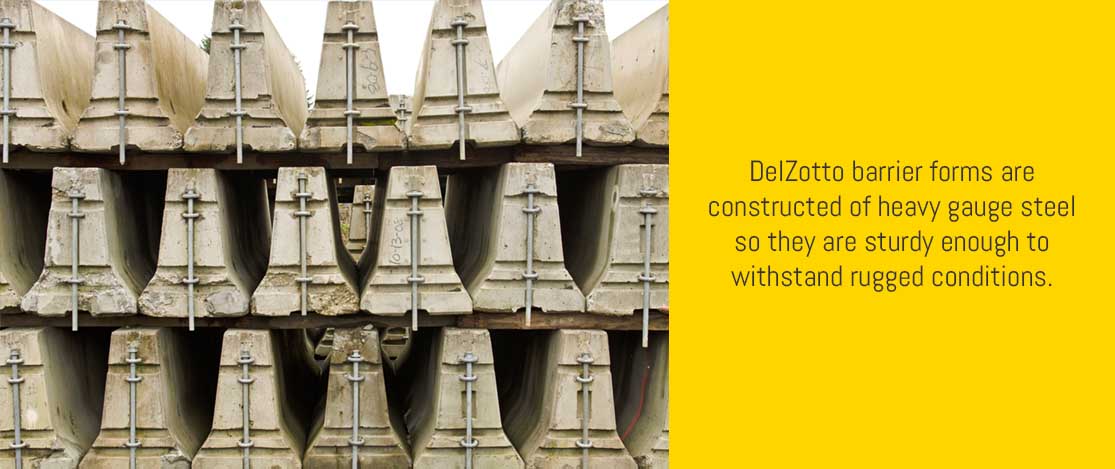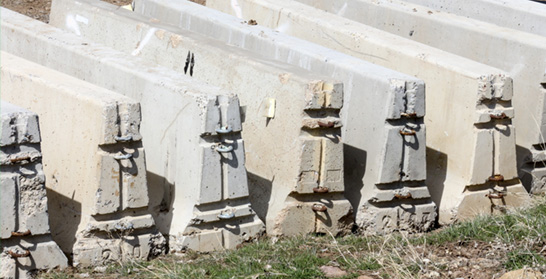Every cement contractor, construction contractor and construction worker should be familiar with the Jersey barrier. The term Jersey barrier is used because these concrete barriers were first employed by the New Jersey State Highway Department for dividing multiple highway lanes during the 1950s. Stevens Institute of Technology developed the barrier design that was first used in New Jersey between 1955 and 1959.
Jersey Barriers For All
Jersey barriers are designed to help with reducing the risk of head-on collisions from cross-over traffic, rerouting traffic, protecting pedestrians and defending against land-borne attacks. Jersey barriers are widely used in road construction around the country as portable, generic walls that minimize the potential damage resulting from a motor vehicle crash. Throughout the western states, these concrete barriers are widely referred to as K-rails.
A Solid Design
The concrete traffic barriers typically stand 32 inches high and are constructed of steel-reinforced concrete. The sloped design at the bottom of the wall allows vehicle tires to ride up in the event of a collision, thereby reducing the risk of sheet metal damage from occurring. Some of these barriers are fabricated from plastic and some stand as high as 42 inches, better known as Ontario Tall Walls.

Different Barrier Options
There are a number of modern variations of the Jersey barrier currently available, including F-shape barriers and constant slope barriers. The concrete traffic barrier is often designed with an embedded steel reinforcement that protrudes from the concrete so it may be linked to other sections or incorporated onto another more permanent fixture. Some of the taller, more heavily reinforced barriers are actually designed to redirect and contain larger vehicles like semi-trailers.
Different Barrier Uses
These barriers are also common fixtures when protests or military action are ongoing. Rebar loops can be embedded into the barrier so military personnel can have secure points to use hook-and-cable lifting systems to repel from. The barrier may also serve as a stable base for wired fencing used to keep hundreds or thousands of protesters at bay.
Del Zotto Barriers
Companies like Del Zotto Products provide a variety of barrier forms for median and highways featuring the most modern technologies. These barrier forms are constructed of heavy gauge steel so they are sturdy enough to withstand rugged conditions. Each of the barrier forms manufactured by Del Zotto feature quick-lift pins, elevated support frames and break-away walls that have binder clamps.

Del Zotto can also complete custom modifications on their barriers to accommodate clients’ specific needs. Typically, these barriers are equipped with forklift pockets, the patented Del Zotto vibration system and the standard 4,000 pounds of concrete weight. The company also includes four 2-inch diameter anchor bolt holes for mounting.
These barriers are designed to be poured and stripped in a short-time period. The earliest generations of these barriers were actually constructed as less-costly options for maintaining median barriers on busy highways. These concerns are as valid today as they were when the barriers were first designed to be used in New Jersey and other major metropolitan areas throughout the country.
For information about our cement silos or any of our other products, contact us today. Comment below if you’d like to provide additional information about Jersey barriers.

